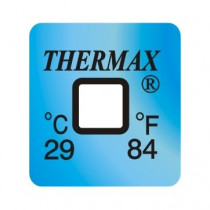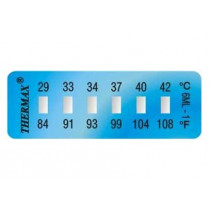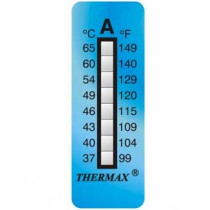No products
Prices do not include tax.
Food sterilization: HACCP protocol
When it comes to disinfecting food, temperature plays an important role. Heat helps tremendously in the elimination of pathogens that could cause diseases. However, we do need to make sure that sterilization temperatures are reached, thus making temperature control essential. Without adequate cleaning and disinfection procedures for food, pathogens would become a serious health hazard. In addition, this would most certainly reduce the possibility of packaging and preserving food.
The HACCP protocol defines the critical points of these processes, warning about the risks and explaining how to prevent them to avoid health hazards.
Main thermometers to control the temperature in food sterilization processes
The TDI adhesive temperature label is an indicator coming with three irreversible temperature points. It has been specifically manufactured to control the sanitizing of industrial dishwashers.
TDI Label- TDI Thermometer for the control...292,88 €Irreversible-type temperature indicator. These temperature labels are adhesive and can be stuck on any surface or product. They change to permanent colour when reaching the marked temperature.
1-temperature irreversible thermometer...25,61 €Adhesive temperature labels with 6 control points are supplied in packets with 10 units.
6-level mini irreversible thermometer...13,96 €This product is supplied in packets with 10 thermometers. Irreversible-type temperature indicator with 8 temperature points. This is an adhesive thermometer than can be stuck on any surface or product. The points are marked with temperature in ºC and ºF.
8-level irreversible thermometers (pack 10...15,20 €
Food cleaning and disinfection programmes
The food industry always works against the clock. Once an animal is butchered or a plant is harvested, it inevitably starts to rot.
Between the slaughterhouse or the crop field and the consumer’s home, there is a whole production chain that must ensure a safe preservation system. The implementation of methodologies based on industrial food sterilization programmes is the only guarantee to achieve these goals. Refrigeration is a useful way of preserving food, preventing or slowing down its deterioration. However, conducting a previous sterilization process is sometimes needed to make sure that pathogens are eliminated.
The most effective method for the sterilization of packaged foods is heat disinfection. This method involves heating the food and its containers up to temperatures that eliminate any microorganisms that may damage them. In this sense, food sterilization temperature ranges from 115 to 127 °C, depending on the type of food. This is high enough to ensure the complete annihilation of any common pathogens.
Temperature control and ensuring that the necessary temperatures are reached in these processes is vital, as errors can have serious health consequences. One of the several disinfection methods is the sterilization of preserves in an autoclave. These machines heat the preserves using water vapour above 100 °C and subject them to high pressure. High temperatures and water vapour together lead to the denaturation of proteins in microorganisms, contributing to an effective elimination.
The HACCP protocol
HACCP stands for Hazard Analysis and Critical Control Points, a protocol followed by the food industry to ensure food safety and industrial food sterilization. It involves the identification, evaluation and prevention of contamination risks of food throughout the production chain.
This tool guarantees the quality of food and ensures its preservation over time. It is a strict protocol that establishes self-control mechanisms, allowing for rapid action if there is an onset of a threat somewhere in the chain.
In short, disinfecting food is key in the modern food industry. This ensures that the entire population has access to food that is in good condition and has guaranteed quality standards. And all thanks to prevention.




